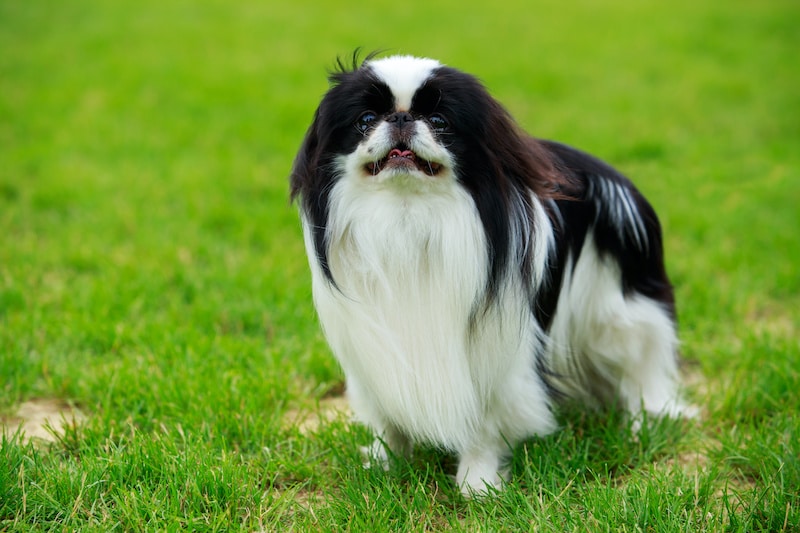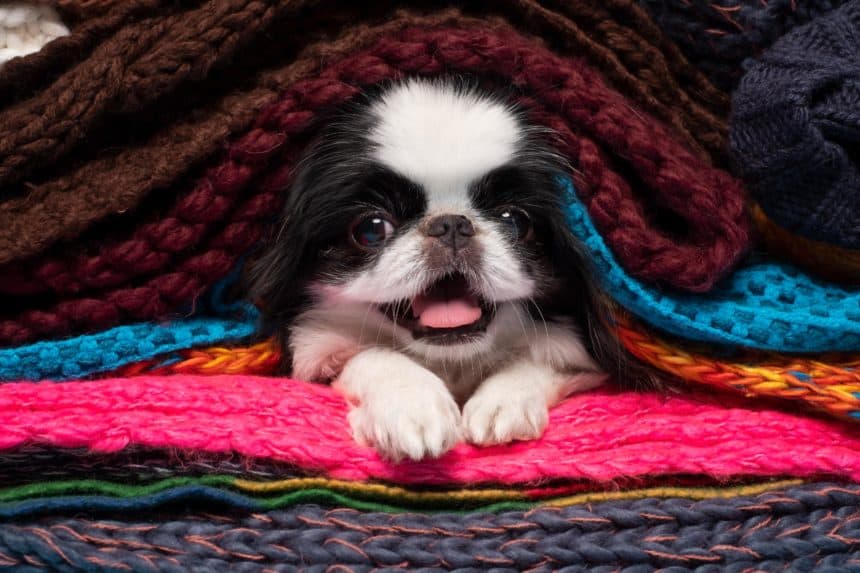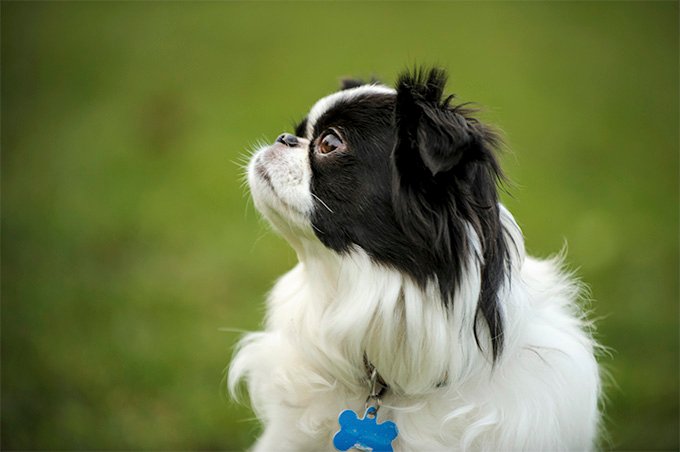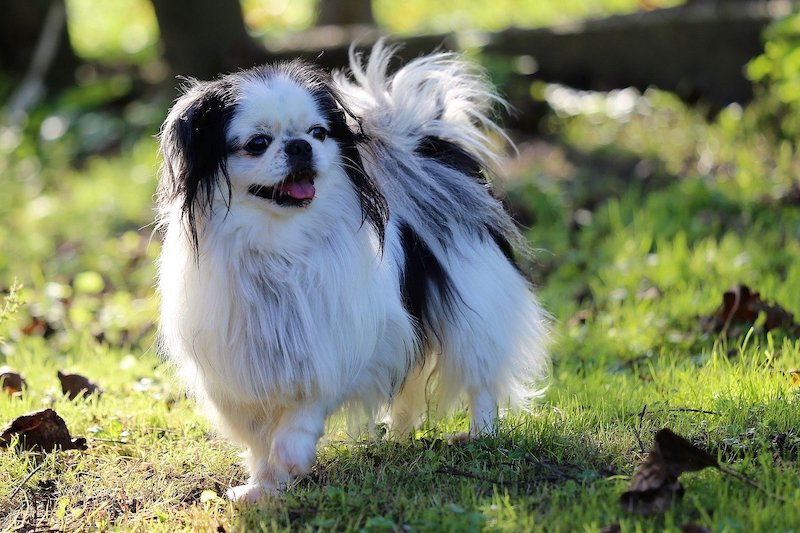
Toy dogs called Japanese Chins (also known as Japanese Spaniels) were previously kept as companions by Japan’s upper class. As a result of their discerning, perceptive, and self-reliant personalities, they have gained widespread adulation and are often compared to cats.
To what extent do they lose hair? The long, silky single coat of the Japanese Chin is lost only seldom. They shed all year round, but more heavily in certain seasons, like spring. Thankfully, their tiny size means their hair loss is limited, and their coat is simple to care for.
What makes Chins so unique will be discussed, as well as how much hair you can anticipate seeing about the house and how to minimize it.
Japanese Chin Shedding

In comparison, a Bolognese and an Iggy, two other tiny dogs in the toy category, shed far less. However, Japanese Chins shed far less than their Shiba Inu and Pekingese relatives.
Dogs lose fur naturally. Excessive shedding or uneven hair loss are two symptoms that may raise red flags. However, this is typically canine behavior.
This is especially true in the spring and autumn when a chin’s predisposition to lose hair coincides with the seasons. But because they only have one coat, it’s not quite as thick as you’d find on a double-coated animal.
Others claim they have a double coat, which is feasible with a hybrid, however, the American Kennel Club breed standard specifies that Japanese Chins have just one coat.
Plus, their size is really diminutive. Since the pace of shedding is determined by the hair growth cycle, this won’t affect it, but it will reduce the amount of hair they may lose. This will result in less hair on the floor for you to sweep up.
How Do They Feel About Getting Groomed?
Japanese Chins are surprisingly low-maintenance dogs. If you just looked at them, you might assume they need as much care as a Shih Tzu, but this is not the case.
Though chins have longer hair that is more prone to tangles and mats, this is easily manageable with a brief pass of a pin brush once or twice a week. Simply said, that’s about all it takes. When he loses his winter coat, you’ll have to invest a little more time, but not too much.
The pin brush is a low-priced and straightforward option, with its stainless-steel bristles and non-irritating rubber or plastic tips. You may quickly and easily detangle her hair by brushing in the direction of her coat.
Deshedding brushes are used by some individuals and are effective; nevertheless, they may be excessive if you’re just experiencing mild shedding.
Exactly how hypoallergenic are Japanese chins?

It’s not true that Japanese Chins are hypoallergenic.
However, the reality is that no dog is really hypoallergenic. Some individuals are allergic to even hairless dog breeds like the American Hairless Terrier.
This is because allergens from dogs are not found in the hair itself but rather in the dander and dry saliva that cling to it. Meaning that the more their shedding, the greater the risk of these spreading throughout your house.
Dogs of some breeds are less likely to trigger allergic reactions than others, and this is mostly due to the fact that they sweat less than other dogs. Moreover, Chins are not considered hypoallergenic since they shed moderately.
Hair Removal at Home
You shouldn’t expect to totally prevent your dog from shedding. Loss of hair is a common physiological process in animals. New hair replaces old hair when the former grows, stops, and falls out.
But there are several highly efficient methods to minimize shedding to the point that it is unnoticeable. You’ll spend less time picking hair out of your clothing, furnishings, and floors.
Brushing is the easiest and most effective way.
This prevents the loose hair from your dog’s coat from falling out in the first place by removing it straight from the coat. Additionally, when you brush, you distribute the natural oils in their coat, which helps maintain their luster and elasticity.
The Japanese Chin is one of the easiest breeds to care for, and that includes brushing. The goal, therefore, is to be consistent.

Maintaining a healthy coat requires no more than a weekly brushing, but you may certainly increase this to three to five times each week if you choose. You might do it first thing in the morning or just before bed every other night.
If you use a good pin brush and are careful, you shouldn’t bother his skin and you could see a significant reduction in the amount of loose hair.
In addition to brushing, you should also give him a bath once a month or so and make sure he gets enough of fresh water and a portion of good, balanced food. It’s crucial to only buy well-received, high-quality items.
This is significant since low-quality dog shampoos and meals have been linked to allergic reactions and dry skin, both of which may contribute to excessive shedding. When you take Fido to the vet the next time you have doubts, be sure to ask for his or her recommendation.
In the end, Japanese Chins aren’t the ideal choice for a family that desires a childless household. However, the amount of shedding is quite controllable, particularly if you follow some of the suggestions we’ve provided. These pets are quite cute, therefore I believe it’s time well spent to give them a little additional care when it comes to grooming.